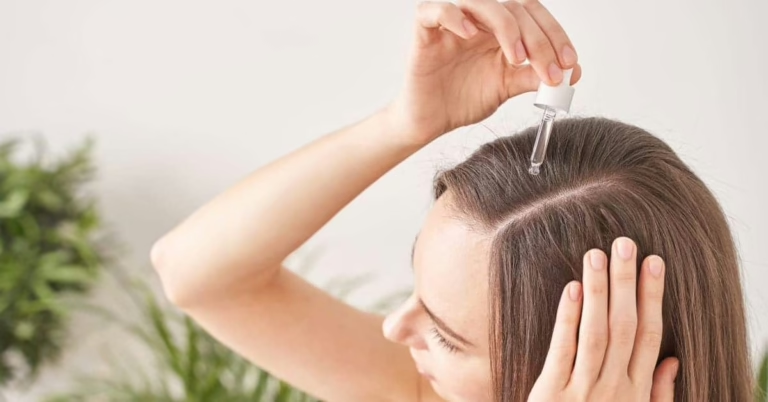Chemically Treated Hair: Comeback Chronicles
Welcome to your ultimate guide on reviving chemically treated hair. In this article, you’ll discover how to transform lifeless, over-processed hair into a vibrant, healthy mane. If you’ve ever felt frustrated by damage from repeated coloring, perming, or straightening, you’re not alone. Today, we explore natural and expert-backed strategies that can give your hair the second chance it deserves. Get ready to learn about the science behind chemical treatments, the risks involved, and—most importantly—actionable steps that you can follow to restore your hair’s natural shine and strength.
You may have experienced that sinking feeling when you run your fingers through your hair and notice it feels dry, brittle, or just not as vibrant as it once was. Chemical treatments, while offering immediate style changes and convenience, can often leave a trail of damage that seems irreversible. But there’s hope. In this article, we’re embarking on a comeback journey for your hair—a journey that blends expert advice with natural remedies to revive and restore your locks.
Imagine waking up each morning to hair that not only looks healthy but feels nourished and full of life. Our approach is grounded in holistic care and supported by scientific insights. You’ll learn about what happens to your hair when it undergoes chemical treatments, the common pitfalls, and the telltale signs of damage. More importantly, you’ll get a clear, step-by-step guide that’s easy to follow, even if you’re new to natural hair care routines.
Throughout this article, we speak directly to you, recognizing the unique challenges you face in maintaining your hair’s health in today’s busy world. Whether you’re a working professional in a bustling city or someone juggling multiple responsibilities, this guide is designed with your lifestyle in mind. Let’s dive in and explore how you can turn your chemically treated hair into a story of renewal and radiance.

Understanding Chemical Hair Treatments
What Are Chemical Treatments?
Chemical treatments encompass a variety of processes that alter the structure of your hair. These include perming, which adds curls; straightening, which smooths out frizz; and coloring, which changes your hair’s hue. Each process works by breaking and reforming the bonds within the hair shaft. While these treatments can provide a dramatic change in style, they often require harsh chemicals that can compromise the integrity of your hair. By understanding what happens at a molecular level, you can better appreciate why some of these treatments leave your hair feeling damaged or depleted.
How Chemical Processes Affect Your Hair
When you subject your hair to chemical treatments, the protective outer layer—known as the cuticle—can become compromised. This damage makes it easier for moisture to escape, leading to dryness, brittleness, and increased susceptibility to breakage. Additionally, repeated chemical exposure may weaken the inner structure of the hair, making it less resilient over time. The effects can vary depending on the type of treatment and your hair’s natural resilience. However, by recognizing these changes, you can begin to take targeted steps to restore moisture, strengthen your hair, and reclaim its natural beauty.

The Impact of Chemical Treatments on Hair Health
Benefits and Risks
Chemical treatments offer a range of benefits. They can give you a new look, improve manageability, and even boost your confidence by transforming your appearance. However, the same treatments that add shine and style can also introduce risks. The chemicals used may strip essential oils from your scalp, leading to dryness and irritation. Over time, the cumulative effects can lead to split ends, thinning hair, and loss of natural luster. To help you navigate these trade-offs, it’s important to weigh the temporary allure of chemical enhancements against the potential long-term damage.
Recognizing Signs of Damage
It’s essential to know the warning signs that your hair has suffered from chemical treatments. If you notice persistent dryness, excessive frizz, or hair that tangles easily, these may be indicators of damage. Other symptoms include increased breakage, a rough texture, and an overall lack of shine. Paying attention to these signals early on can help you take corrective action before the damage becomes irreversible. By understanding what to look for, you can monitor your hair’s health and adopt a more proactive approach to recovery. Remember, awareness is the first step in initiating a successful hair revival plan.
The Comeback Chronicles: Reviving Chemically Treated Hair
Natural Remedies & Treatments
When it comes to reviving your hair, nature offers a wealth of remedies that can restore moisture, enhance strength, and bring back your hair’s natural glow. Natural ingredients like aloe vera, coconut oil, and herbal infusions have been used for centuries to nourish and heal. Aloe vera, for example, is known for its soothing properties and ability to repair damaged cuticles. Coconut oil penetrates deep into the hair shaft, replenishing lost moisture and reducing protein loss. Herbal infusions, such as hibiscus or amla, can stimulate blood circulation in the scalp and promote healthier hair growth.
Incorporating these natural treatments into your routine doesn’t have to be complicated. Simple at-home masks and rinses can work wonders when used consistently. You might start with a basic coconut oil treatment before washing your hair, followed by an aloe vera mask once a week. These remedies are not only effective but also gentle, making them ideal for hair that has been compromised by harsh chemicals. By turning to nature, you can give your hair the nutrients it needs to heal and thrive over time.

Expert-Backed Tips for Hair Revival
Alongside natural remedies, expert advice plays a crucial role in your hair’s recovery journey. Hair care specialists recommend a balanced approach that combines proper nutrition, gentle cleansing, and regular conditioning. One key tip is to avoid overwashing your hair, which can strip away natural oils essential for repair. Instead, try using a sulfate-free shampoo that cleanses without being overly harsh. Additionally, incorporating a deep-conditioning treatment once a week can significantly improve your hair’s elasticity and strength.
Experts also advise paying attention to your diet—ensuring you consume enough proteins, vitamins, and minerals that support hair health. Simple lifestyle adjustments, such as reducing heat styling and avoiding tight hairstyles that stress the hair, can also contribute to recovery. By integrating these expert-backed practices into your routine, you not only help repair damage but also create a foundation for long-term hair health. With patience and consistency, you’ll begin to notice improvements that confirm the effectiveness of your new, holistic approach.

Science Behind Hair Recovery
Key Ingredients That Heal
Several natural ingredients have been scientifically proven to support hair recovery. For instance, coconut oil’s fatty acids help reduce protein loss, making your hair less prone to damage. Aloe vera contains enzymes that repair dead skin cells on the scalp, promoting a healthier environment for hair growth. Additionally, ingredients like argan oil and shea butter are rich in vitamins and antioxidants that nourish and protect the hair from environmental stressors. Understanding these ingredients allows you to choose products that work in harmony with your hair’s natural structure, ensuring a more effective recovery process.
Research and Data Insights
Recent studies have demonstrated the benefits of using natural treatments for chemically damaged hair. Research indicates that regular application of coconut oil can reduce hair breakage by up to 50%, while aloe vera has been shown to improve scalp hydration significantly. Clinical data also supports the idea that antioxidant-rich oils help combat the oxidative stress caused by chemical treatments. These findings reinforce the importance of a science-based approach to hair recovery. By combining these proven ingredients with expert advice and natural remedies, you can create a robust plan for restoring your hair’s health. The evidence is clear: natural solutions offer a viable and effective alternative to harsh chemical repairs.
Step-by-Step Guide to Reviving Your Hair
Daily Hair Care Routine
Reviving your hair starts with establishing a consistent daily care routine. Begin by choosing a gentle, sulfate-free shampoo that cleanses without stripping away essential oils. When washing, use lukewarm water instead of hot water, as extreme temperatures can exacerbate damage. After shampooing, apply a nourishing conditioner, focusing on the mid-lengths to the ends of your hair where damage is most pronounced. Once or twice a week, incorporate a deep-conditioning treatment or a hair mask enriched with natural oils and vitamins. Allow the treatment to penetrate your hair for at least 20 minutes before rinsing thoroughly. As you progress with your routine, consider limiting the use of heat styling tools and air-drying your hair whenever possible. This daily care regimen forms the backbone of your hair revival process, ensuring that your hair receives the gentle care it needs to recover gradually.

Recommended Products and DIY Treatments
In addition to a solid daily routine, choosing the right products is crucial. Look for shampoos and conditioners that are specifically designed for damaged or chemically treated hair. Many products on the market now feature natural ingredients such as argan oil, coconut oil, and aloe vera. For a DIY approach, you can create your own hair mask by mixing one tablespoon of coconut oil with a mashed ripe avocado. Apply this mixture to damp hair, ensuring every strand is well-coated, and leave it on for 30 minutes before washing out. Another effective treatment is a simple aloe vera gel rinse, which can be mixed with a few drops of essential oil for added fragrance and benefits. These products and DIY treatments not only provide moisture and nourishment but also help rebuild your hair’s natural protective barrier. By integrating these recommendations into your routine, you pave the way for a gradual and noticeable transformation in the health and vitality of your hair.
Real Stories and Testimonials
You’re not alone on this journey. Many people have faced similar challenges with chemically treated hair and have successfully revived their locks using natural remedies and expert advice. Consider the story of Priya, a young professional from Mumbai, who struggled with severe dryness and breakage after years of frequent coloring. After switching to a natural hair care routine that included regular coconut oil treatments and sulfate-free shampoos, she noticed a remarkable change in just a few months. Priya’s hair became noticeably softer, more manageable, and full of life.
Similarly, Rohit from Bangalore shares how a combination of aloe vera masks and reduced heat styling transformed his once-frizzy hair into a smoother, healthier version of itself. These testimonials not only provide inspiration but also serve as practical proof that natural, science-backed approaches can yield significant results. Reading these stories, you can see that recovery is possible regardless of how severe the damage may seem. They remind you that every step you take towards gentle, holistic hair care contributes to a brighter, more confident future for your hair.

Action Plan
As you reach the end of this guide, it’s clear that reviving chemically treated hair is not only possible but also a journey that blends nature, science, and expert care. Today, you’ve learned about the effects of chemical treatments, recognized the signs of damage, and discovered natural remedies that can help restore your hair’s strength and shine. By adopting a consistent daily routine, using gentle products, and incorporating DIY treatments, you pave the way for a lasting transformation.
Now it’s time to put this plan into action. Begin by reassessing your current hair care routine and gradually integrate the changes discussed here. Remember, patience and consistency are key—results may take time, but every small improvement is a step in the right direction. If you ever feel overwhelmed, refer back to this guide, and consider connecting with a hair care expert who can offer personalized advice. Your journey to a healthier, revitalized mane starts now, and with every effort you make, you’ll soon enjoy hair that’s as vibrant and dynamic as you are.







